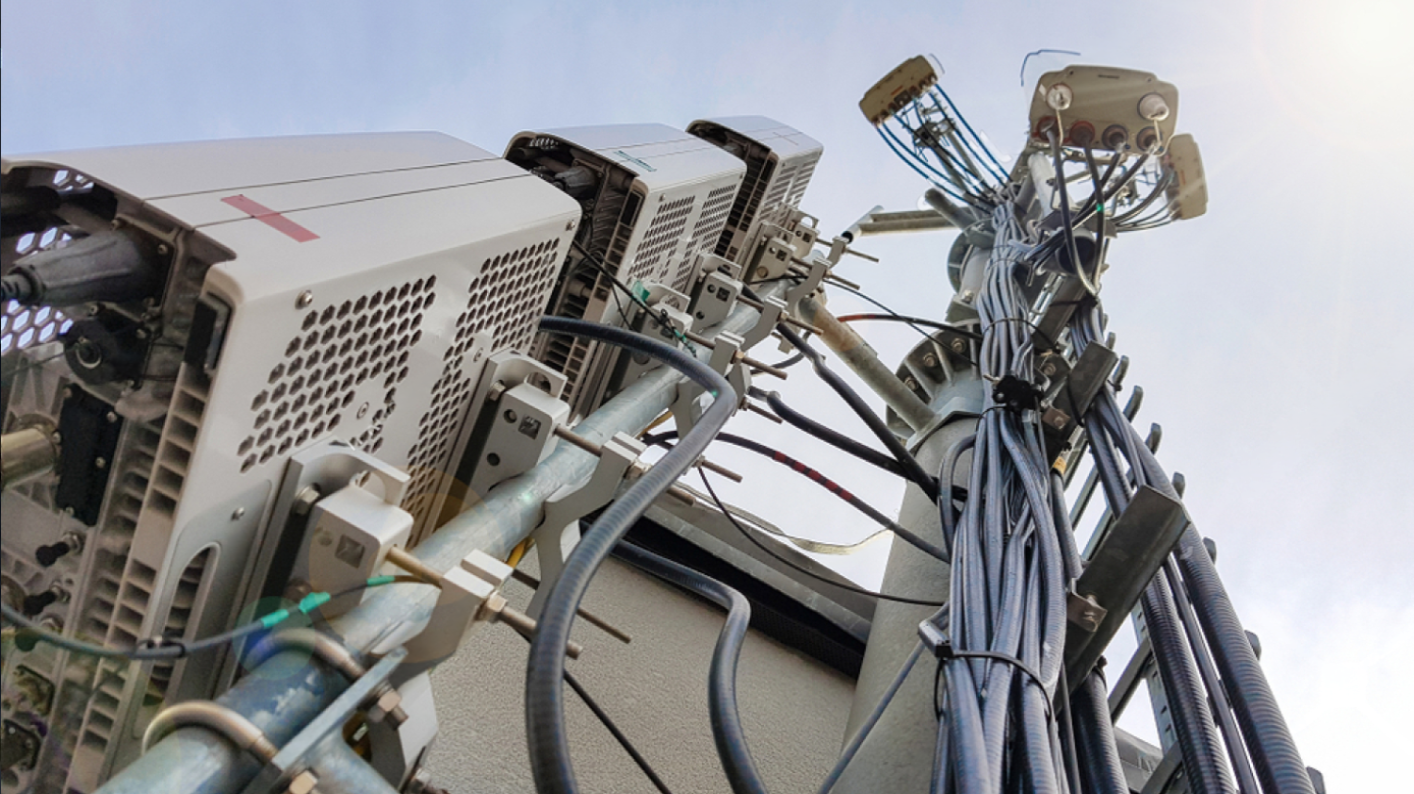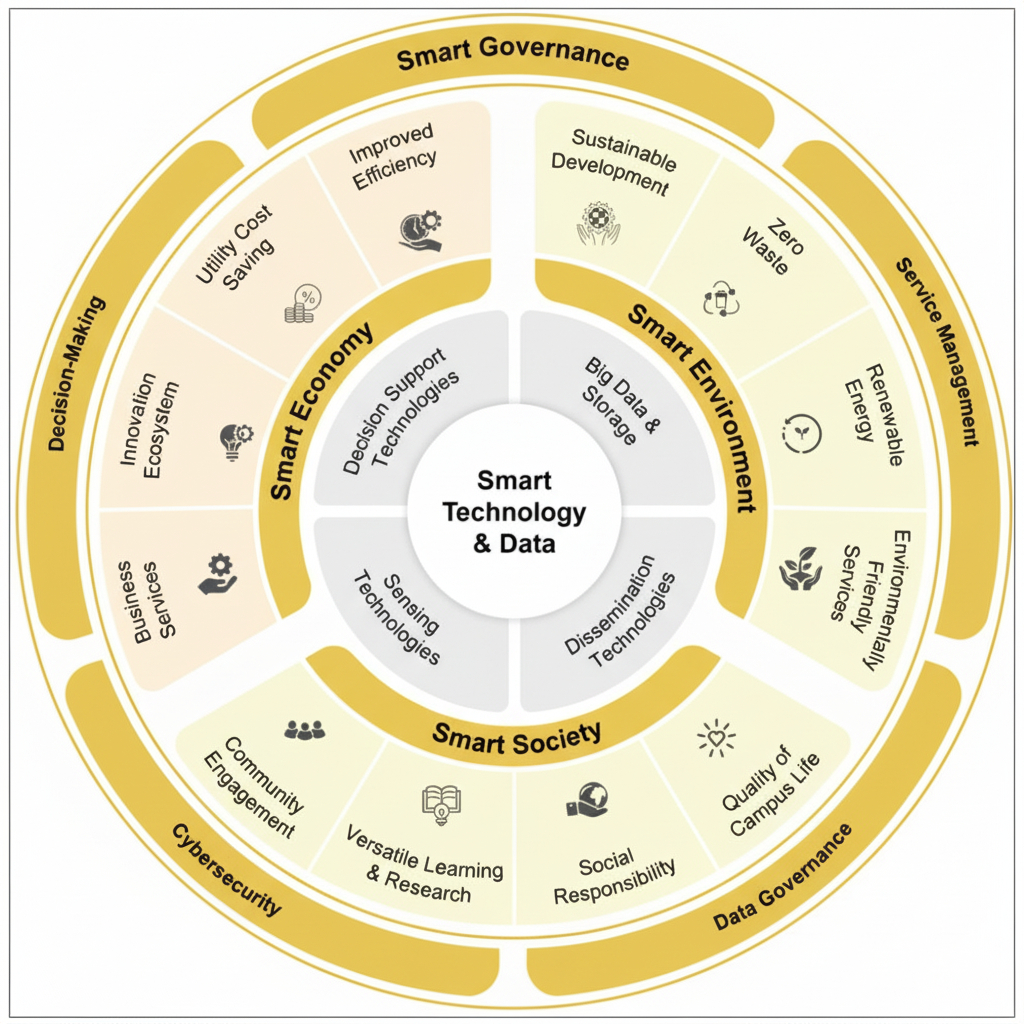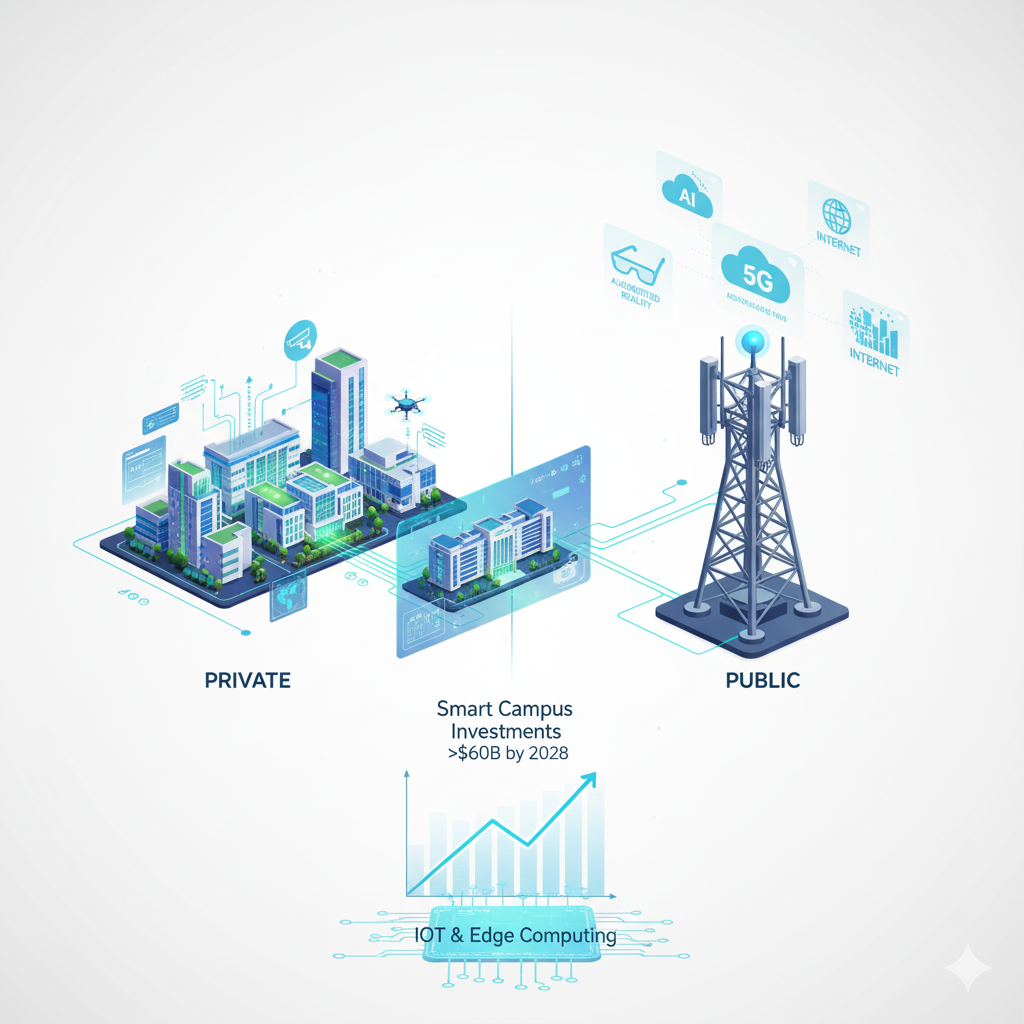October 10, 2025

Across industries, the way organizations connect, manage, and automate their operations is changing rapidly. From universities enhancing learning environments to hospitals improving patient safety and corporate campuses streamlining operations, connectivity now drives innovation. This evolution has given rise to the Smart Campus, a connected ecosystem where infrastructure, automation, and advanced wireless networks work together to create intelligent, responsive environments.
As campus network infrastructure becomes increasingly complex, organizations are looking beyond traditional Wi-Fi toward Private LTE and 5G networks, combining them strategically with wireless and public cellular options for flexibility and performance.
For CIOs, CTOs, and IT leaders, understanding how Smart Campus infrastructure works is no longer optional. It is the foundation for building efficient, secure, and sustainable operations that can evolve with the future.
A Smart Campus is a digitally connected environment that brings together people, devices, and data through integrated infrastructure. By using IoT in smart campuses, data analytics, and automated systems, Smart Campuses enable facilities to respond intelligently to real-time conditions. Lighting can adjust to occupancy, HVAC systems learn usage patterns, and security systems recognize anomalies instantly. The purpose is not only convenience but smarter resource management, stronger safety, and a better user experience.
In traditional setups, departments often work in isolation. Facility management, energy systems, and IT each operate separately. A Smart Campus connects these systems under one intelligent framework. With unified infrastructure, decision-makers gain clear visibility into energy use, equipment performance, and environmental conditions across the entire property. This allows for faster, more informed decisions that reduce downtime and operational costs.
Smart Campuses are also central to digital transformation in education and industry. As institutions and enterprises adopt hybrid work models and sustainability goals, intelligent automation enables flexibility and resilience. Hospitals can improve patient monitoring, universities can enhance digital learning, and enterprises can optimize productivity. A Smart Campus turns complex environments into efficient, self-learning ecosystems.
Several key technologies make Smart Campuses possible. Together, they enable seamless automation, reliable communication, and actionable insights.
Edge computing is one of the most important foundations. It processes data near its source rather than sending everything to distant cloud servers. This local processing reduces latency and increases reliability, which is essential in critical settings such as hospital networks or industrial control systems. Research from IDC indicates that edge computing can cut operational latency by up to 40 percent, improving both speed and decision-making.
Private LTE and spectrum management are transforming connectivity for enterprise environments. Unlike public networks, private LTE provides dedicated, secure, and scalable bandwidth. On large campuses with thousands of connected devices, this ensures consistent performance and better security. 5G and spectrum management allow organizations to fine-tune frequency allocation to avoid interference and maintain stability. Metro Wireless specializes in these solutions, helping enterprises deploy reliable private LTE networks that deliver strong coverage and predictable performance.
Wireless networks and Wi-Fi remain essential for flexible, localized connectivity. They are ideal for indoor areas or temporary setups where fast deployment matters. However, Private LTE and 5G outperform public Wi-Fi when it comes to scale, mobility, and security. Most forward-thinking enterprises now combine both technologies into a unified strategy, using Wi-Fi for open access and private cellular for mission-critical functions. This hybrid model reflects the evolution of private vs public networks in campus automation design.
IoT integration ties everything together. Sensors track motion, temperature, air quality, and equipment status. Smart meters record energy consumption, while cameras and environmental sensors feed data into central dashboards. These insights allow operators to identify inefficiencies, predict maintenance needs, and make quick adjustments. The result is a system that adapts continuously and improves over time.
Smart Campus systems are redefining how enterprises function. In industrial settings, campus automation solutions manage machinery, monitor energy usage, and optimize production lines. At the University of Campinas in Brazil, Intel and LTTS collaborated to implement a Smart Campus network that combines 5G, AI, and IoT technologies. The project achieved a 30 percent reduction in energy costs and extended the life of critical equipment through predictive analytics.
In manufacturing and logistics, predictive maintenance powered by IoT sensors has become essential. Machines can detect vibration or temperature irregularities, alerting maintenance teams before a breakdown occurs. Siemens reports that predictive maintenance can reduce unplanned downtime by as much as half while also extending asset longevity.
Smart buildings are another major component. The Indonesian Defence University deployed integrated systems for lighting, HVAC, and environmental monitoring, creating an intelligent environment that improves comfort and safety while conserving energy. Similar strategies apply to hospitals and corporate campuses, where automated systems can maintain ideal conditions for both equipment and people.
Warehouses and distribution centers are also adopting Smart Campus models. With Private LTE and wireless networks supporting real-time tracking and AI-based logistics management, enterprises gain precise visibility into operations. These systems help coordinate vehicles, inventory, and staff in real time, improving productivity and reducing errors.
The benefits of a Smart Campus extend across financial, operational, and human dimensions.
The most direct advantage is cost efficiency. Automated energy systems can lower utility expenses by 20 to 40 percent, depending on the scale of implementation. Predictive maintenance reduces repair costs and prevents major disruptions, which saves both time and resources.
Scalability is another strong advantage. Private LTE networks expand easily as an organization grows, without sacrificing performance. Wi-Fi and wireless networks can complement these systems for indoor areas, visitor access, or temporary facilities, ensuring full enterprise connectivity. Together, they provide the balance between flexibility and control that modern Smart Campuses require.
Security and compliance are built into Smart Campus design. With encrypted communications and centralized management, sensitive information remains protected. This is especially important for hospitals and universities that handle regulated data under HIPAA or FERPA guidelines.
Finally, Smart Campuses improve the human experience. Students and staff enjoy seamless connectivity, safer environments, and better access to digital tools. Employees benefit from optimized workspaces that adapt to lighting, temperature, and occupancy in real time. These small enhancements create environments that support both comfort and performance.

The difference between traditional and Smart Campus infrastructure is significant. Traditional campuses rely on isolated systems, with Wi-Fi and public cellular networks operating separately. This often leads to inefficiencies, blind spots, and inconsistent performance.
Smart Campuses use unified network architecture to bring everything together. Private LTE connectivity ensures reliable, high-speed coverage across large areas. This consistency supports mission-critical applications such as surveillance, robotics, and automated maintenance systems. Enterprises also gain centralized control of security policies and device management.
Traditional networks are more vulnerable to breaches due to open access and limited monitoring. Smart Campuses mitigate these risks with secure authentication, encrypted communication, and proactive threat detection. The shift to a Smart Campus model delivers higher reliability, improved safety, and stronger long-term returns.
Although the initial investment in infrastructure can be higher, the long-term benefits outweigh the costs. Lower energy consumption, reduced downtime, and enhanced operational intelligence create measurable savings and a faster path to sustainability.
Implementing a Smart Campus requires careful planning. One of the first challenges is spectrum management and regulatory compliance. Organizations must secure proper frequency allocation and manage interference effectively. Partnering with providers such as Metro Wireless helps simplify these technical requirements.
Integration with legacy systems is another key consideration. Many enterprises already operate older infrastructure that cannot be replaced all at once. A phased integration strategy ensures existing systems continue functioning while new technologies are gradually introduced.
Security remains an ongoing focus. With more connected devices, the potential for cyber threats grows. Strong encryption, identity verification, and network segmentation are essential components of a secure deployment.
Finally, every organization must evaluate the cost-to-value ratio. While initial costs can appear high, the long-term gains in energy efficiency, automation, and operational uptime often deliver substantial returns within a few years of implementation.

The next generation of Smart Campuses will move toward greater intelligence and autonomy. Artificial intelligence will take on a larger role in managing facilities, analyzing data, and optimizing operations automatically. The expansion of 5G connectivity will enable even faster communication, supporting advanced applications such as augmented reality, digital twins, and autonomous systems.
Future campus network infrastructure will rely on a balance of private cellular, wireless networks, and public cellular systems, working together to deliver uninterrupted performance across all environments.
A global study by ResearchAndMarkets projects that Smart Campus investments will exceed 60 billion dollars by 2028. Growth will be driven by the increasing use of AI, IoT, and edge computing across sectors. This trend highlights the importance of investing in modern, scalable infrastructure now rather than later.
For CIOs and CTOs, the path forward involves assessing current systems, identifying gaps, and selecting technology partners that can deliver secure, reliable private and wireless network solutions. Working with providers like Metro Wireless helps organizations design and deploy Smart Campus environments that are ready for the challenges of tomorrow.

What is a Smart Campus in IT and enterprise terms?
A Smart Campus is an integrated network of connected devices and systems that use IoT, data analytics, and automation to enhance efficiency, security, and sustainability.
How does edge computing support Smart Campus operations?
Edge computing processes data locally to reduce latency, enabling faster and more reliable responses for real-time applications.
Why is Private LTE preferred over Wi-Fi for Smart Campuses?
Private LTE provides dedicated bandwidth, stronger security, and higher scalability compared to public Wi-Fi networks, though both can coexist for full coverage.
What are typical Smart Campus applications?
Common uses include industrial automation, predictive maintenance, smart building management, and advanced logistics systems.
How does predictive maintenance reduce downtime?
Sensors detect early warning signs of equipment failure, allowing maintenance teams to take action before breakdowns occur.
What are the key trends in Smart Campus development?
AI integration, 5G expansion, and sustainable IoT networks are shaping the future of Smart Campus ecosystems.
Why risk operational disruptions, data security breaches, or sustainability shortfalls on unreliable Wi-Fi or overpriced carrier contracts when you can take full control with Metro Wireless?
We deliver enterprise-grade LTE and 5G private networks for Smart Campuses, built for industries that cannot afford inefficiency. Whether in education, healthcare, corporate campuses, or beyond, we provide speed, security, and scalability on your terms, all at a fraction of the cost of large carriers.
No excuses. Just industrial-strength connectivity designed for enterprises that demand more.
Contact Metro Wireless today to future-proof your Smart Campus that is ready for the future.

Tyler Hoffman
CEO
